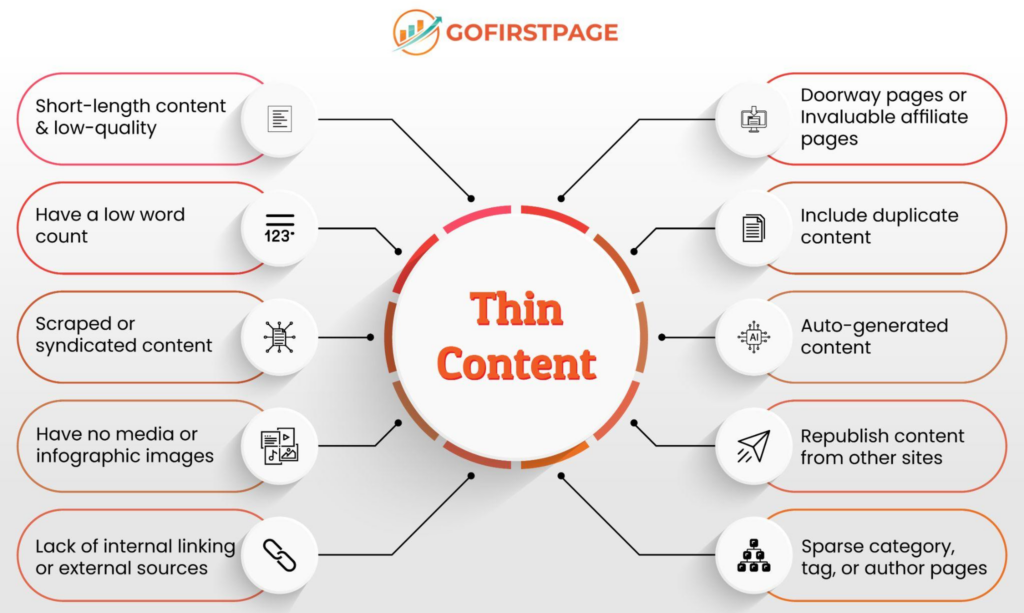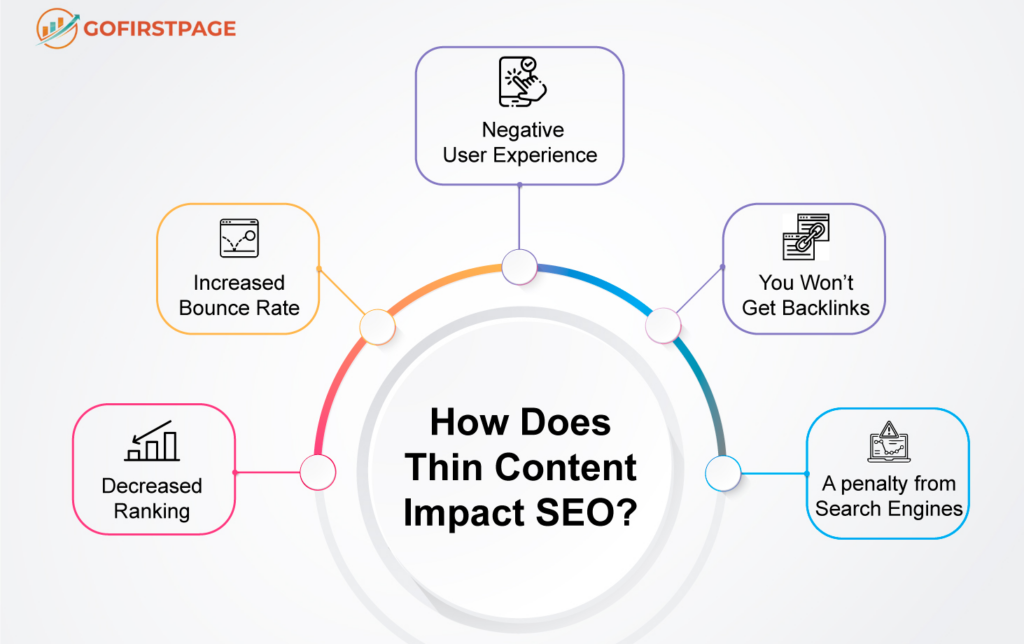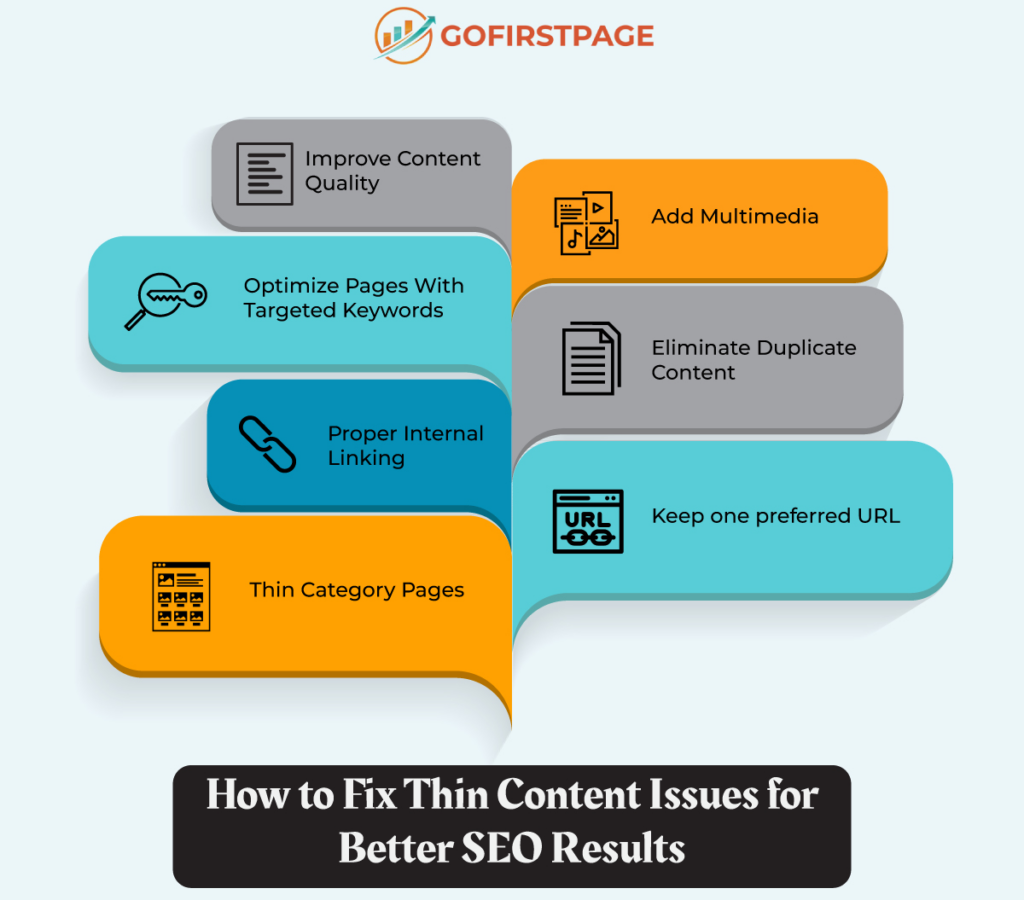If you’re a website owner or a brand, you want to help your audiences & deliver them the best experience with helpful information. If you like this, you likely have encountered the SEO term thin content.
Want to deliver more valuable content?… then this guide is for you.
Usually, most SEO experts identify thin content as one of the most common reasons why pages fail to rank higher on the SERPs.
Suppose you’re a recipe blogger who wants to share a recipe for a classic Italian dish – spaghetti carbonara. You create a web page titled “Spaghetti Carbonara Recipe” but only include a short paragraph with a list of ingredients and no brief instructions. The page doesn’t offer any unique insights, tips, or helpful information for the reader.
This page is an example of thin content that will not improve your SEO ranking and is unlikely to provide any value to your audience. Thin content can negatively impact your SEO rankings & on-site user experience, leaving searchers hungry for more.
To make it easier for you, we advise you to partner with an affordable SEO agency that knows the top-notch techniques to analyze & fix any SEO ranking issues.
Let’s dive deeper to understand better what thin content is and how it affects your SEO ranking…
What Is Thin Content?
The term “thin content” refers to web pages or blog posts with very little valuable or original content that provides the user with minimal or no meaningful information, which search engines can flag as spam or low-quality content.
The thin content pages often include the following:
1.Short-length content
2. Are of low-quality
3. Have a low word count
4. Scraped or syndicated content
5. Have no media or infographic images
6. Doorway pages or Invaluable affiliate pages
7. Include duplicate content
8. Auto-generated content
9. Republish content from other sites
10. Sparse category, tag, or author pages
11. Lack of internal linking or external sources
In more straightforward terms, it may lack relevance or depth on a particular topic; thin content is the opposite of evergreen informative content – it has little value to zero, is not helpful, and can even harm your website’s SEO efforts.

As defined by Google, thin content is “low-quality or shallow pages on your site” or content that adds little to no value to the user experience. Google warns users that if their pages don’t “provide users with significantly unique or valuable content,” they risk being penalized, particularly if they break one of Google’s Webmaster Guidelines. Following the E-A-T guidelines, you can create valuable content and steer clear of thin content territory.
How Does Thin Content Impact SEO?
Search engines are designed to provide users with the best results for their search queries. If your website has pages with thin content, it’s less likely to rank higher on SERPs. This is because search engines prioritize pages that provide users with high-quality, informative, and engaging content.

Thin content can hurt your website’s SEO in several ways:
1- Decreased Ranking:
When search engine bots crawl your website, they analyze the content & determine the relevance of your pages. If your website has pages with thin content, search engines may consider your website less valuable and rank it lower on SERPs. Moreover, you must also focus on your GMB listings to gain more visibility.
2- Increased bounce rate
A high bounce rate hurts your SEO. It’s worth mentioning because it will hurt conversions and cost you money. One way to decrease the bounce rate is to create the best-quality content that provides real value to the users. Note: Thin content = bad UX.
3- Negative User Experience
Thin content pages can frustrate users, as they don’t provide the information they seek. Users are more likely to leave your website quickly and never return, leading to higher bounce rates, lower engagement, and fewer conversions. With content optimization, you must also focus on website re-designing services if your website isn’t user-friendly.
4- You won’t get backlinks
Backlinks may not be as powerful as before, but they are still among the top three ranking signals. And if you hope to earn them, you’ve got to give people a reason to link to you. If your content doesn’t provide any value to users, users may never return to your site, and they won’t link to it either.
5- A penalty from Search Engines
Search engines like Google and Bing have guidelines that webmasters must follow to ensure they provide high-quality content to users. If your website violates these guidelines with thin content, search engines may penalize you by reducing your ranking or even delisting your site.
How to Identify & Fix Thin Content Issues on Your Website for Better SEO Results

Before tackling any content issues, you need to identify the scope of the problem and create an action plan accordingly. When our SEO audit experts evaluate the site content, they label urls as improve, consolidate, remove, or leave. Those classifications are much more helpful than binary “yes” or “no” labels.
To avoid having thin content on your website, you must know how to identify it. Here are some tools and strategies:
• Google Analytics: Use Google Analytics to check your website’s bounce rates and average time spent on pages. A particular page with a high bounce rate or low engagement may indicate that it has thin content.
• Content Audit: Conduct a content audit to evaluate the quality & UX development of your website’s pages. Check for pages with low word count, duplicate content, or pages that don’t offer the reader any unique insights or value.
• SEO Tools: Use SEO tools like SEMrush, Ahrefs, or Moz to analyze your website’s content quality, keyword usage, and page optimization. These tools can identify pages with thin content and recommend improving them.
Collect relevant SEO metrics from Google Analytics and Search Console, including organic sessions, word count, impressions, bounce rate, and conversions. After that, import the data into Google Sheets and add columns for your “target keyword” and “what actions to take.” If you are facing any issue regarding SEO content auditing, then call our SEO experts now @ +1 (917) 277-7780 or Email us at info@gofirstpage.com
It’s necessary to note the targeted keyword as that’s the basis for how you will evaluate most of your content as per SEO & UX. After all, how can you cover the topic thoroughly if you don’t know what your competitors are publishing about it?
Now that you’ve identified thin content on your website, it’s time to take relevant actions to improve them. Here are some robust strategies to help you fix thin content issues:
1- Improve Content Quality
Start by improving the quality of your thin content. Add valuable, unique, and statistical information to your site pages, ensuring they are well-written and engaging. Aim for a minimum of 500-1000 words per page and follow better content marketing strategies.
2- Add Multimedia
Include infographics, relevant images, and videos into your pages to make them more visually appealing, informative, and engaging. Multimedia also helps your large content break up into small chunks of text and improve the overall user experience.
3- Eliminate Duplicate Content
Remove any pages with duplicate, plagiarized, or paraphrased content or consolidate them into one page. Duplicate content can harm your overall SEO efforts and lead to search engine penalties.
4- Optimize Pages With Targeted Keywords
Use relevant & targeted keywords in your page/meta titles, meta descriptions, and site content to help search engine crawlers comprehend what your pages are about. Ensure your pages are correctly structured with headings and subheadings to improve readability and SEO. Also, you can take the help of a local SEO agency, as they know how to target keywords for better optimization.
5- Proper Internal Linking
Link to other related pages on your website to provide additional information and improve the user experience. Internal linking helps search engine bots to understand the hierarchy of your website’s pages and their relevance to each other.
6- Keep one preferred URL
It seems so simple to SEO experts, but it’s sometimes still forgotten that there should be just one preferred URL. Always set up a 301 redirect from the unwanted version to the preferred canonical version.
7- Thin Category Pages
Some product-based businesses have hundreds of category pages, while others may only have a few products, which may appear to search engines as thin content. You have two options: no index the category or chop it. Consult with the best E-Commerce SEO agency that can optimize your site to rank higher.
Concluding Thoughts: What’s Next?
Thin content can harm your website’s SEO efforts, leading to lower rankings, penalties, and the worst user experience. Once you’ve improved, consolidated, or removed low-quality thin content, you might wonder what to do next. Identifying and fixing thin content issues can improve your website’s SEO and provide more value to your users.
Update your strategy for content marketing. You will find yourself back where you started if you continue operating similarly. So before publishing new quality content, understand how to do keyword research and map out your effective strategy through an SEO audit.
Knowing your keywords in advance will help you create a ton of original content that both Google and your visitors will adore. Always strive to provide the best experience for your audience, and remember that quality should always take priority over quantity.
If you are facing any issue regarding SEO content auditing, then call our SEO experts now @ +1 (917) 277-7780 or Email us at info@gofirstpage.com
Answers To Common Questions: Quick Overview
Ques: What is thin content?
Ans: Thin content refers to web pages that contain little or no valuable or relevant information to the user. This can include pages with only a few sentences, often have fewer than 300 words, and offer no unique value compared to other online pages.
Ques: Why is thin content harmful to SEO?
Ans: Thin content pages can harm your website’s SEO efforts by reducing your site’s overall quality score & authenticity. Search engines like Google prioritize high-quality content that provides value to the user. When your website has thin content, this can result in lower rankings and decreased traffic to your site.
Ques: What are the common types of thin content?
Ans: Common types of thin content include product pages with no descriptions or specifications, pages with only images or videos, and pages with low-quality, low word count, auto-generated, syndicated content, duplicated content, pages with no media or infographic images & more.
Ques: Can thin content affect user experience?
Ans: Yes, thin content can negatively affect user experience by providing little to no information to the user. This can lead to higher bounce rates (meaning users leave your website quickly) and reduced overall engagement on your site. If you are facing any issue regarding SEO content auditing, then call our SEO experts now @ +1 (917) 277-7780 or Visit our site gofirstpage.com
Ques: How can an SEO agency help identify thin content?
Ans: An SEO agency can help you identify thin content on your site using various tools, including Google Analytics and Google Search Console. SEO experts also perform manual content audits & analyze website performance to determine which pages require improvement.
Ques: What are the best practices for creating quality content?
Ans: Best practices for creating quality content include providing valuable, unique, and relevant information to the targeted user, using descriptive and engaging language, and optimizing for relevant keywords and user intent.
Ques: Can adding more content to a page fix thin content?
Ans: If the additional content is worthwhile and pertinent to the user, adding more to a page can help fix thin content. However, adding duplicate or low-quality content can further hurt your site’s SEO efforts.
Ques: What are the benefits of fixing thin content?
Ans: Fixing thin content can improve your website’s overall quality score, increase user engagement, and ultimately increase rankings & traffic to your site. An SEO agency can provide the best SEO strategies with tech expertise to help you achieve these benefits and replace thin content with quality, valuable content.
Ques: How long does it take to fix thin content?
Ans: Depending on the project’s size and the content length that needs to be improved, different amounts of time are needed to fix thin content. Based on your particular requirements, an SEO company can offer a timeline to improve your content & online reputation.




